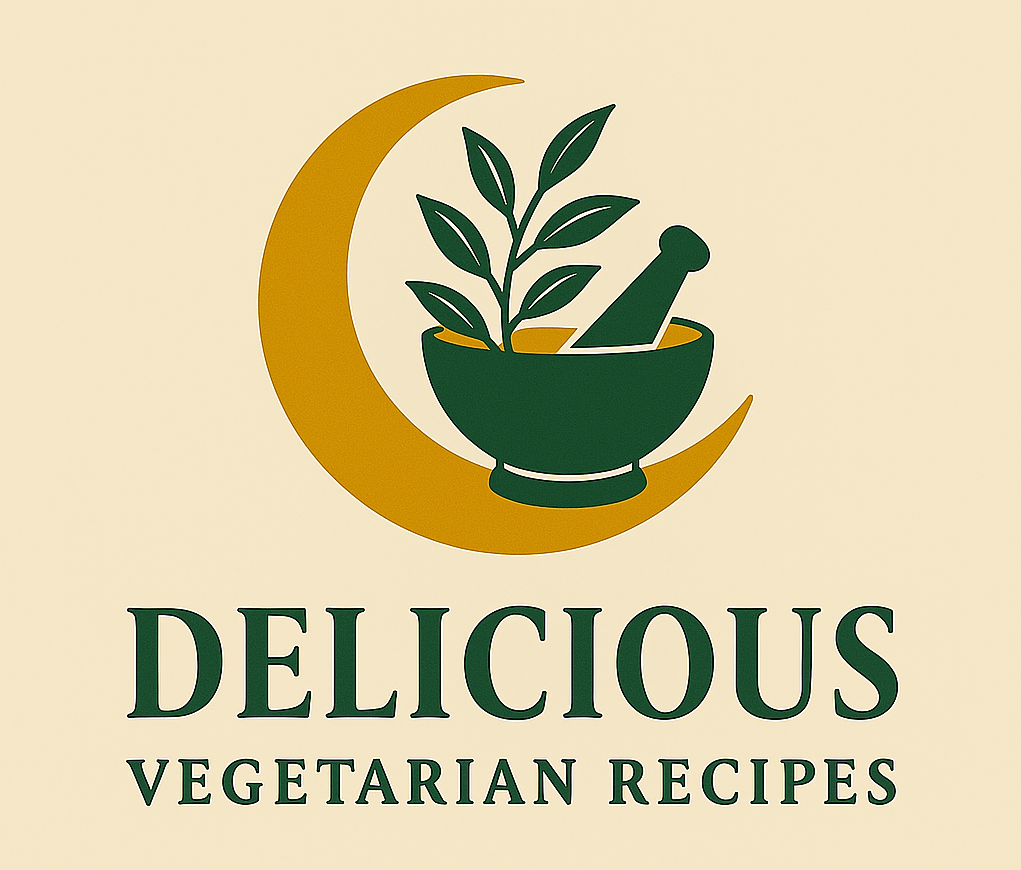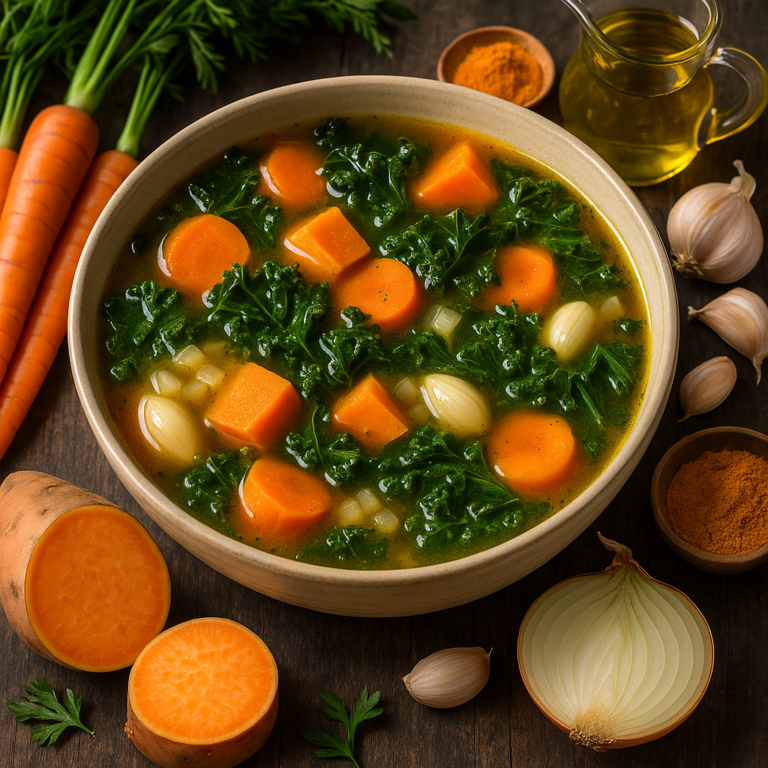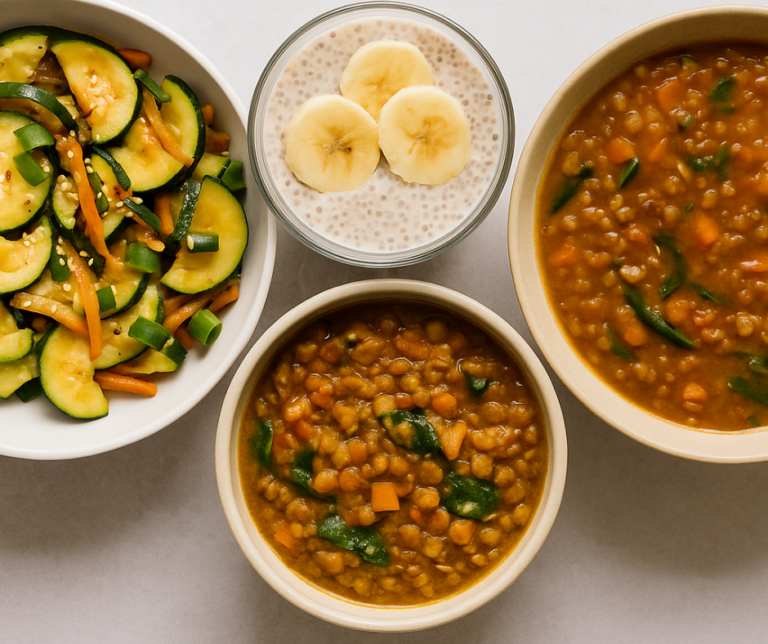A Guide to Probiotic Supplements for Gut Health and 5 Powerful Foods
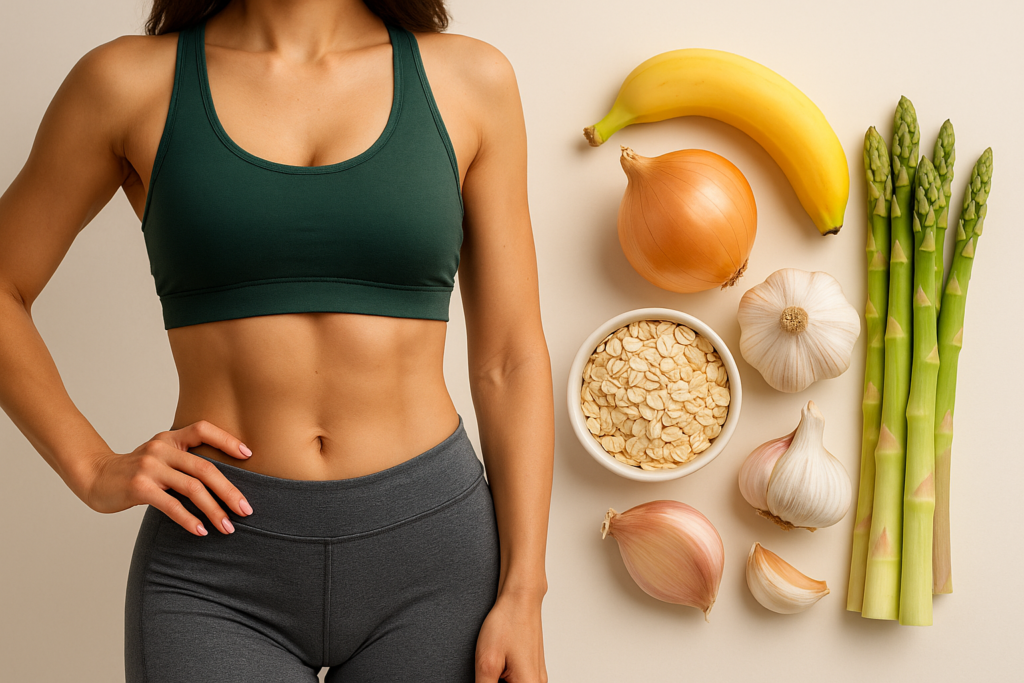
There are a plethora of different probiotic supplements for gut health on the market, and choosing the best one for you can become a daunting task.
In this article I’ll break down what you need to look for in a probiotic, which one I recommend, and how to boost their results naturally. I will also go over a good prebiotic to take along with it, and 5 foods you can eat, and enjoy to actually help you to heal your gut naturally, and effectively.
If you’ve been dealing with bloating, fatigue, digestive issues, or even skin flare ups, your gut might be the problem, and probiotic supplements for gut health can help reset your gut microbiome naturally.
As you may already know, not all probiotic supplements for gut health are created equal, or are even worth your hard earned money.
Probiotics supplements for gut health can be used for a lot of different health benefits, not just your gut, but high quality probiotics, as well as a high quality prebiotic is what I’ll primarily focus on in this article.
Can Probiotic Supplements For Gut Health Support Detox Pathways?
When most people think about probiotics, they think about digestion, but high quality probiotics may also play a role in supporting the body’s detox pathways.
Your gut and liver are two of the main systems responsible for flushing out toxins, and when your gut is out of balance, those detox pathways can slow down. That’s where high quality probiotics come in. Certain strains may help support the gut lining, reduce inflammation, and improve digestion.
A healthy gut also helps your liver do its job more effectively. Together, they keep your detox pathways running smoothly, so your body can eliminate what it doesn’t need.
This can lead to more energy, clearer skin, and even better digestion overall.
For best results, pair your high quality probiotic supplement with a prebiotic supplement, and / or prebiotic rich foods. Also be sure to drink plenty of water, and eat fiber to keep everything moving.
Weight Loss Management: How Gut Health Plays A Role:
Many people don’t realize that stubborn weight gain can be linked to poor gut health. Research shows the gut microbiome plays a key role in regulating metabolism, appetite, inflammation, and even how the body stores fat.
In fact, certain probiotic strains have been linked to improved weight loss management, especially when paired with a clean diet and regular movement.
Pairing Prebiotics And Probiotics for Better Results
While probiotic supplements introduce beneficial bacteria into your gut, prebiotic rich foods help those good bacteria to thrive.
Think of probiotics as the seeds, and prebiotics as the water and sunlight they need to grow.
Some of the best prebiotic rich foods include:
- Garlic
- Onions
- Bananas
- Oats
- Asparagus
Pairing a high quality probiotic like Prime Biome with prebiotic rich foods, or a prebiotic supplement like Peak BioBoost can supercharge your gut health.
Prebiotics feed the good bacteria introduced by probiotics, just as sunlight and water help seeds to grow.
For optimal results, we recommend pairing Prime Biome with Peak BioBoost because probiotics need fuel to thrive. Together, they create an ideal environment for digestion, energy, and metabolism to thrive at their peak.
👉 Check out Peak BioBoost here – a clinically supported prebiotic fiber designed to work hand in hand with your probiotic for maximum gut repair.
👉 Check out Prime Biome here – a premium probiotic that promotes skin clarity, smooth digestion with long term gut balance.
(This post contains affiliate links. If you purchase through them, I may earn a small commission at no extra cost to you.)
Prime Biome – Skin And Gut Probiotic Gummies
Prime Biome is ideal for women over 35 who want better digestion, weight loss management support, and clearer skin. It contains:
- B. coagulans – A powerful strain known to survive stomach acid.
- Prebiotic fiber to feed your gut flora.
- Lion’s Mane – Supports immunity and cognition.
- Babchi and Slippery Elm – Promote skin clarity and soothe the gut lining.
It comes in both gummy and capsule form, is gentle on the stomach, and fits easily into any daily routine. Users report better digestion, less bloating, improved skin texture, and a gradual, steady weight loss when used consistently for 90 days.
👉 Click here to get Prime Biome,
Peak BioBoost – Constipation & Digestive Relief Formula
Peak BioBoost is a natural prebiotic supplement that helps to relieve constipation, bloating, and sluggish digestion, and works especially well for people over 50. It works by feeding your healthy gut bacteria and improving regularity without using harsh laxatives.
It contains:
- Prebiotic fibers from inulin, acacia gum, FOS, and more
- Magnesium for smooth muscle function and bowel movement support
- No artificial sweeteners, fillers, or stimulants
- Mixes easily with coffee or tea in the morning for effortless daily use
Users love the gentle, natural relief and improved energy, digestion, and gut comfort.
These aren’t quick fix pills, or gummies. They are high quality probiotics and tools that support your body’s natural systems.
Using both the Prime Biome and either prebiotic rich foods, or Peak BioBoost will ensure the best results for those looking to naturally support gut health, improve digestion, and achieve sustainable weight management.
In the next section, we’ll break down the exact probiotic strains that support digestion, metabolism, and more.
Looking for a more personalized plan to fix your gut issues for good?
Consider professional nutrition coaching that tailors your plan based on your symptoms, lifestyle, and gut test results.
Try Personalized Coaching TodayComponents To Look For In Probiotic Supplements For Gut Health:
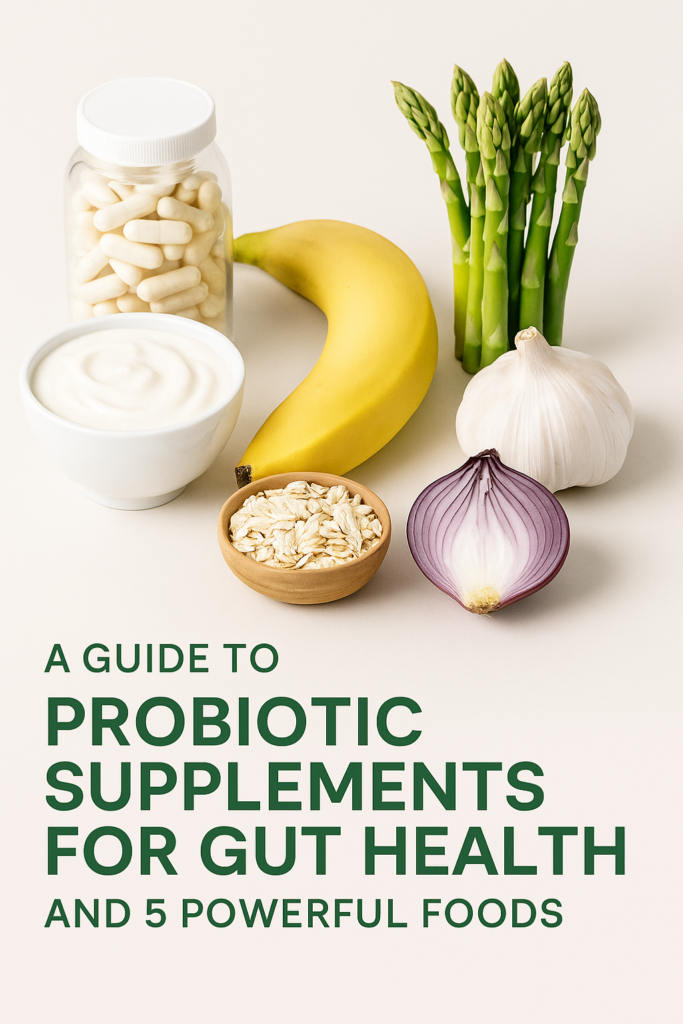
There are 3 main components you will want to look out for before buying a high quality probiotic supplement. They are: CFU Count, Shelf stability, and probiotic strain.
Let’s break it all down so you have a better understanding:
What To Look For In High Quality Probiotics And Questions To Ask Yourself:
What’s a Good CFU Count?
- 1 billion to 10 billion CFU per serving = A good measure for everyday gut maintenance.
- 15 billion+ CFU = Is better for people with major gut issues such as IBS, bloating, etc…
- 50 billion+ CFU = Is typically doctor grade, or recovery level doses.
If you’re anything like me, you just go to the store, whether online or in person, look for your supplement, pick out what looks good, read the label, and if it looks good, you’re on your way.
However, with probiotics, it can be tricky, and you have to be careful! You might just end up buying something that is dead bacteria.
The 5 Main Things to Look For in a Shelf Stable Supplement:
- Clearly Labeled “Shelf Stable”
- If it doesn’t say shelf stable on the bottle, then you should assume that it needs to be refrigerated.
- Freeze Dried or Microencapsulated Strains.
- These techniques keep bacteria dormant until they hit your gut.
- Protective Bottle Packaging
- Look for dark colored bottles or bottles that are protected from light.
- Also look for bottles that mention “moisture lock” or “desiccant packs” inside.
- Expiration Date Guarantee
- Some only promise CFU count at the time of manufacture.
- High quality probiotics full CFU count through the expiration.
- No Cold Storage Required
- You should be able to place it in a drawer without needing to refrigerate.
Be sure to always check the label. If it doesn’t say ‘shelf stable,’ or guarantee the CFU count until expiration, you might be throwing money away on a probiotic that was never meant to work in the first place.
What Is Probiotic Strain Variety and Why It Matters
As I mentioned earlier, high quality probiotics can be beneficial to a lot of different areas of your health, not just your gut. Each strain of bacteria has a different job to do inside your gut.
Think of them like specialists on a health team:
- One helps with digestion.
- Another fights inflammation.
- Another boosts immunity.
- One to help reduce anxiety.
- And one just cleans up the toxins.
If your probiotic only has one or two strains, you’re basically hiring a one man band.
However, you’ll want the full orchestra on your team.
The 3 Major Probiotic Classifications You’ll See:
These are the last names of the bacteria family. Then each one has specific strains along with their health benefits underneath it.
1. Lactobacillus
- Usually helps with digestion and immune support.
- Found in fermented foods like yogurt and kefir.
- Works in the small intestine.
Common Strains:
- L. acidophilus – Helps with lactose digestion, vaginal health, and general balance.
- L. rhamnosus – Helps with immune boosting, and helps to reduce diarrhea, especially after taking antibiotics.
- L. plantarum – Helps to reduce inflammation, and also helps with IBS.
2. Bifidobacterium
- Supports the large intestine /colon.
- Is known to ease bloating, constipation, and brain fog.
Common Strains:
- B. longum – Helps with gut and brain connection support, as well as stress relief.
- B. bifidum – Helps to break down complex carbs.
- B. lactis – Helps to improve immunity and bowel movements.
3. Bacillus (Spore forming probiotics)
- Helps with harsh stomach acid.
- Is good for people who don’t respond well to other strains.
- Is often found in shelf stable formulas.
Common Strain:
- Bacillus coagulans – helps with gas, bloating, and even arthritis symptoms.
How Do You Know What Strains You’ll Need
While some probiotics list specific strains, others use proprietary blends. Look for products that include a mix of Lactobacillus and Bifidobacterium strains for full gut coverage, especially if you’re dealing with IBS, gas, or digestion issues.
You can’t always know for sure unless you get a gut microbiome test, and you don’t even need a prescription from a doctor.
Order Your Gut Health Test Now
These tests analyze your gut and give personalized, and easy to understand results so you know what your body actually needs and what to avoid. It’s one of the fastest ways to stop guessing and start healing.
Here’s a quick cheat sheet:
| Your Problem | Try Strains With… |
|---|---|
| Bloating & Gas | B. lactis, L. plantarum |
| IBS or Cramping | L. rhamnosus, L. plantarum |
| Constipation | B. longum, B. lactis |
| Diarrhea | L. rhamnosus, B. bifidum |
| Stress & Mood | B. longum, L. acidophilus |
| Antibiotic Recovery | L. acidophilus, L. rhamnosus |
While some probiotics list specific strains, others use proprietary blends. Look for products that include a mix of Lactobacillus and Bifidobacterium strains for full gut coverage, especially if you’re dealing with IBS, gas, or digestion issues.
5 Foods That Naturally Support Probiotic Supplements For Gut Health And What To Look For:

Adding probiotic and prebiotic rich foods to the diet can support or even enhance the effects of supplements. Be sure to add these onto your grocery list.
- Sauerkraut – Is fermented cabbage that’s naturally rich in probiotics, but only if it’s unpasteurized.
Most shelf stable or canned versions are pasteurized, which kills the live cultures.
To get the gut health benefits, choose sauerkraut from the refrigerated section with labels like “raw,” “live cultures,” or “naturally fermented.” - Kimchi – Is a spicy Korean side dish made from fermented veggies like napa cabbage and radish, and seasoned with garlic, ginger, and chili.
It’s rich in natural probiotics, antioxidants, and anti inflammatory ingredients.
Look for fermented kimchi in the refrigerated section, ideally labeled with “live cultures” to ensure probiotic benefits.
If you’re new to kimchi, start slow. It’s bold, spicy, and powerful for gut health. - Kefir – is technically a fermented drink, but it’s often treated like a food because of its nutritional and probiotic benefits. It’s loaded with probiotics, often containing 30+ strains of beneficial bacteria and yeast.
It’s stronger than yogurt and one of the richest probiotic sources available.
Look for plain, unsweetened kefir in the dairy section, and make sure it’s labeled “live and active cultures.”
You can drink it straight, blend into smoothies, or pour over cereal.
Non-dairy versions made from coconut, oat, or almond milk are great for lactose free diets - Tempeh Is a fermented soybean cake from Indonesia, made with whole soybeans bound into a firm, chewy block. Unlike tofu, tempeh is rich in natural probiotics, prebiotic fiber, and plant based protein, making it a gut friendly meat alternative.
The fermentation process:
- Supports digestion and microbiome balance
- Reduces phytic acid, improving nutrient absorption
- Boosts fiber intake, which feeds your existing good bacteria
How to eat it:
Slice and pan fry, crumble into bowls or tacos, marinate and grill, or add to stir fries.
Always cook it. However, if you want to preserve more probiotics, stick to steaming or low heat pan frying.
Even when some live cultures are lost, tempeh still supports gut health by making nutrients easier to digest and feeding beneficial bacteria.
Be sure to always cook tempeh before eating it even though it’s fermented, it’s not typically eaten raw due to flavor and texture.
I know you’re probably thinking, “If I cook it, won’t that kill the probiotic in it?” If you thought this, you’ve been paying attention.
The answer is yes! Cooking tempeh can kill some of the live probiotic bacteria created during fermentation, especially if you heat it at high temperatures, but:
- Tempeh is still beneficial even when cooked, because the fermentation process predigests the soybeans, making nutrients easier to digest even if some live cultures are lost.
- It’s loaded with prebiotics. Prebiotics are fiber that feeds your existing good gut bacteria. It’s also loaded with plant based protein, and vitamins like B12 if fortified.
So even when lightly cooked, tempeh supports gut health, just in a more indirect way.
5. Kombucha – Is a tangy, lightly sweet fermented tea made with a SCOBY (symbiotic culture of bacteria and yeast).
It’s packed with probiotics that support digestion, metabolism, sugar cravings, and detox pathways.
Have you ever tried resetting your gut with a Low FODMAP diet?
If your digestion still feels off, check out our free 5 day Low FODMAP Vegetarian Recipe Plan. It’s loaded with simple recipes, a printable grocery list, and practical tips to help calm your system naturally.
Buying Tips:
Look for raw, unpasteurized kombucha with no added sugar.
Start slow though because it’s potent, and can upset sensitive stomachs if you overdo it.
If you want to, you can even brew it at home with tea, sugar, and a SCOBY.
Probiotic + Prebiotic = Better Results
Pairing a probiotic with a prebiotic (plant based fibers that feed probiotics) can enhance effectiveness.
Some supplements already include prebiotics, but they’re also found in foods like:
- Garlic
- Onions
- Bananas
- Oats
- Asparagus
Ready to feel better, look better, and get rid of the bloat? Start your PrimeBiome and Peak BioBoost journey today
Final Thoughts
Gut health is the focus of many, various health concerns. Choosing the right probiotic supplement plus incorporating probiotic and prebiotic foods can make a big difference.
Healing the gut isn’t an overnight fix, but with the right tools in place, it becomes a lot easier to support lasting results.
Start with a high quality probiotic supplement like Prime Biome , and a high quality prebiotic supplement like Peak BioBoost, and give them both about 90 days to see and feel results. Support it with easy meals and foods like the ones mentioned earlier in this article. Your gut and your brain will thank you.
If you’d enjoyed this article, be sure to also check out our Banana Berry Smoothie Recipe for a delicious gut healthy meal.
You can’t always know for sure what the problem is unless you get a gut microbiome test, and luckily, you don’t need a doctor’s referral or expensive clinic visit to do it.
Get Your Trusted At Home Gut Health Lab Test Kit Here
